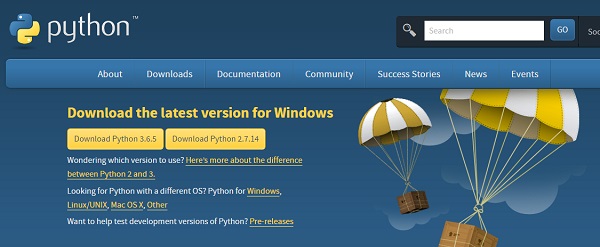Python Overview and Installation
Python is an open source scripting language which is high-level, interpreted, interactive and object-oriented. It is designed to be highly readable. The syntax of Python language is easy to understand and uses English keywords frequently.
Features of Python Language
Python provides the following major features −
Interpreted
Python is processed at runtime using the interpreter. There is no need to compile a program before execution. It is similar to PERL and PHP.
Object-Oriented
Python follows object-oriented style and design patterns. It includes class definition with various features like encapsulation and polymorphism.
Key Points of Python Language
The key points of Python programming language are as follows −
- It includes functional and structured programming and methods as well as object oriented programming methods.
- It can be used as a scripting language or as a programming language.
- It includes automatic garbage collection.
- It includes high-level dynamic data types and supports various dynamic type checking.
- Python includes a feature of integration with C, C++ and languages like Java.
The download link for Python language is as follows − www.python.org/downloadsIt includes packages for various operating systems like Windows, MacOS and Linux distributions.

Python Strings
The basic declaration of strings is shown below −
str = 'Hello World!'
Python Lists
The lists of python can be declared as compound data types, separated by commas and enclosed within square brackets ([]).
list = [ 'abcd', 786 , 2.23, 'john', 70.2 ] tinylist = [123, 'john']
Python Tuples
A tuple is dynamic data type of Python which consists of number of values separated by commas. Tuples are enclosed with parentheses.
tinytuple = (123, 'john')
Python Dictionary
Python dictionary is a type of hash table. A dictionary key can be almost any data type of Python, which are usually numbers or strings.
tinydict = {'name': 'omkar','code':6734, 'dept': 'sales'}
Cryptography Packages
Python includes a package called cryptography which provides cryptographic recipes and primitives. It supports Python 2.7, Python 3.4+, and PyPy 5.3+. The basic installation of cryptography package is achieved through following command −
pip install cryptography
There are various packages with both high level recipes and low level interfaces to common cryptographic algorithms such as symmetric ciphers, message digests and key derivation functions.
Throughout this tutorial, we will be using various packages of Python for implementation of cryptographic algorithms.
No comments:
Post a Comment